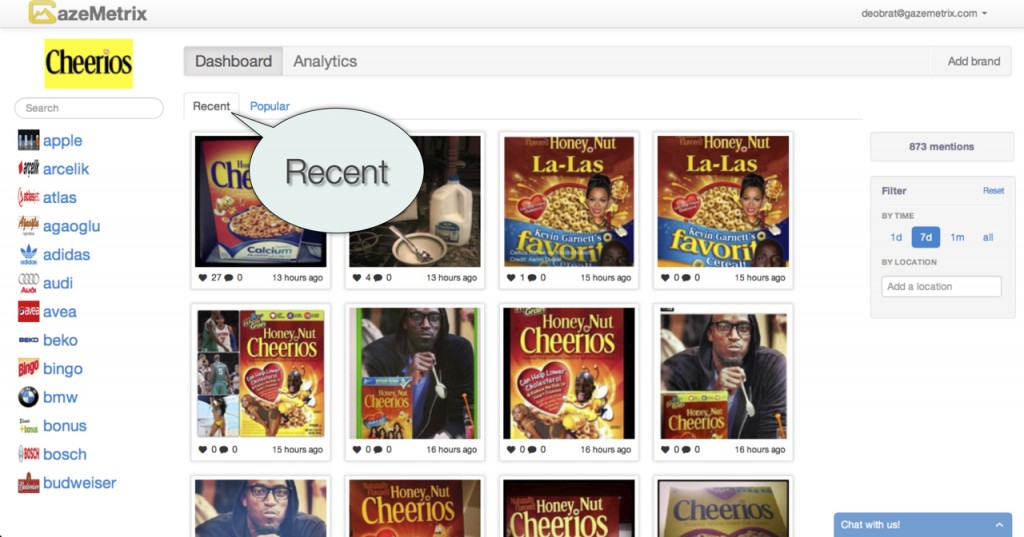Startup gazeMetrix Tracks Brand Images on Social Sites
February 22, 2013
Startup gazeMetrix uses computer vision and machine learning to recognize brand logos in photos posted on Instagram and other social media sites. Co-founder and CEO Deobrat Singh leads his company as it tries to analyze images for marketing and advertising purposes. The end goal is making it easier for companies to track and promote brands online and targeted ads.
“As images become an increasingly popular form of social content, such analysis makes sense: collecting ‘likes,’ tracking hashtags, and mining tweets and comments for mentions of a brand can be helpful, but images show more precisely how people are using (and sharing) products like Nike running shoes,” writes MIT Technology Review.
“One thing that’s absolutely clear to us is it’s an indicator of how visible those brands are in people’s lives,” suggests Singh, who notes that large companies such as Coca-Cola and Nike are trying out the service.
The startup has come a long way in a short amount of time. Singh and his two co-founders started experimenting just this past summer when “they used image recognition technology they had originally developed for a service that could identify apps on your friends’ smartphones and then find them in the application store on your handset,” writes the article.
“They analyzed images shared on Twitter to see how many people uploaded pictures that included the Starbucks logo, which they presumed would be easy to spot and rather common, given the preponderance of Starbucks coffee shops and cup-carrying commuters. It was quickly clear they were on the right track: they spotted more than 10,000 logos the first day,” the article continues.
That sparked the idea for gazeMetrix, which launched in December on Instagram and has since collected data on 35,000 brands, 100 of which they’re actively tracking now.
“What gazeMetrix is doing doesn’t sound that complicated, computer vision experts say, especially since corporate logos are designed to stand out,” writes Technology Review, but “nonetheless, Kevin Bowyer, chair of the University of Notre Dame’s computer science and engineering department, calls it a ‘cool and interesting application of technology that’s matured over the last two decades.'”
“I definitely expect to see a lot more of this,” adds James Hays, an assistant professor at Brown University’s computer science department.


No Comments Yet
You can be the first to comment!
Sorry, comments for this entry are closed at this time.